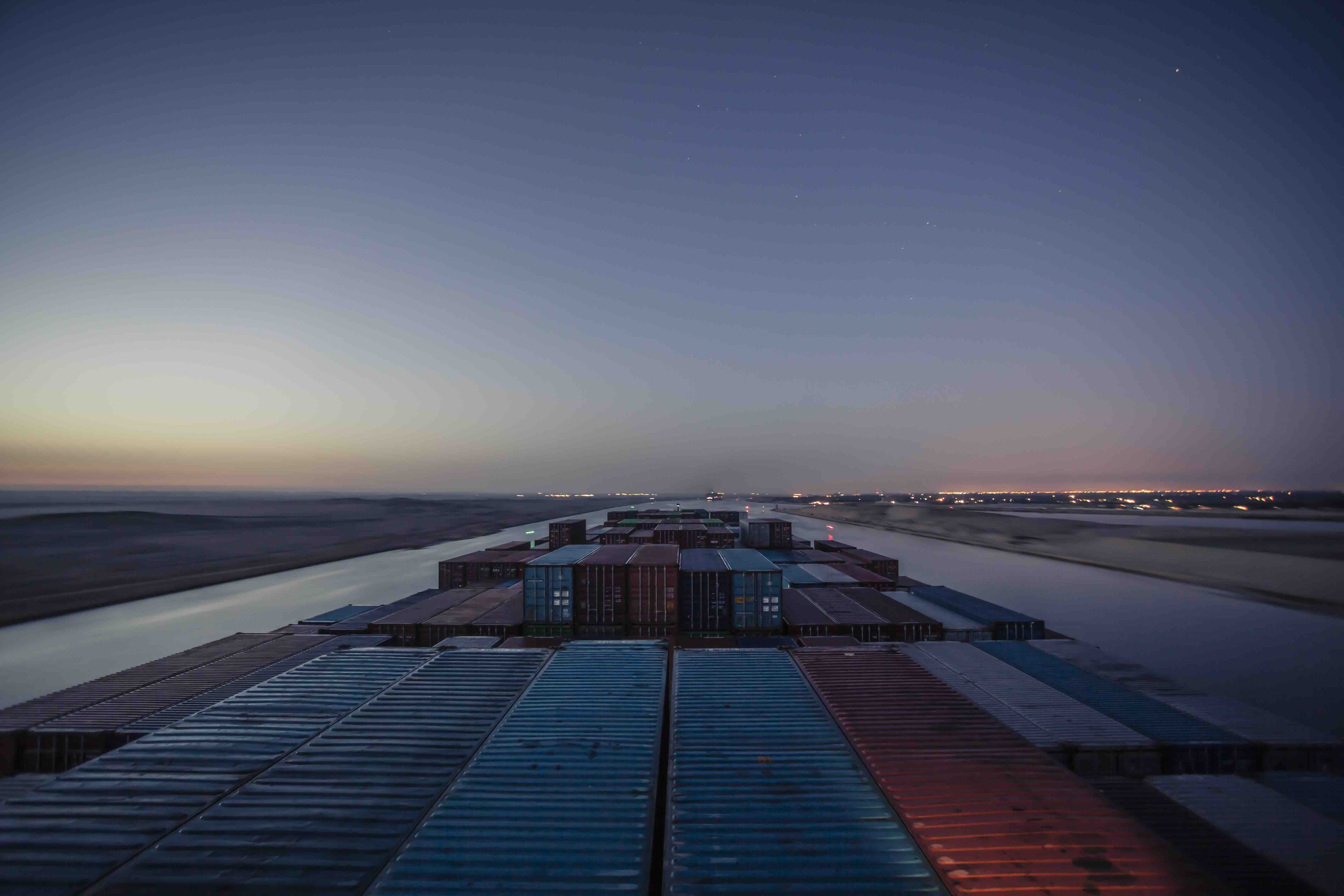
Air freight volumes increased 11.4% year on year in August 2024 but dipped 0.2% compared to July. Freight rates nevertheless stayed well above pre-Covid levels.
1/ Supply and demand trends
- Traffic in August 2024
World freight traffic increased 11.4% year on year in August 2024, registering a ninth consecutive month of double-digit growth. On a seasonally corrected basis, however, cargo volumes were down 0.2% month on month. This was the first month-on-month fall since February, according to the International Air Transport Association (IATA). According to our estimates, the August traffic total stood at 22.9 billion tonne-kilometres.
Carriers in the Asia-Pacific and Europe regions remained the growth drivers, contributing 43% and 25% respectively to overall growth, compared to 15% for Middle East airlines and 12% for those in North America.

* CTK: cargo tonne-kilometres - Data source: IATA.
- Traffic in the first eight months
In the year up to the end of August, air freight volumes grew 13% compared to the first eight months of 2023 and 13.9% on international lines alone. Carriers in the Asia-Pacific, Europe and Middle East regions again distinguished themselves with double-digit growth figures.

* CTK: cargo tonne-kilometres - Data source: IATA.
- Capacity
Capacity increased 6.2% year on year in August 2024 and 0.2% month on month after adjustment for seasonal variations. Total capacity stood at about 52.3 billion tonne-kilometres, according to our calculations. Year-on-year growth has been slowing since the start of the year but, according to the IATA, August was nevertheless the fourth consecutive month in which capacity exceeded 50 billion available cargo-tonne kilometres - "a level never seen before in the history of air cargo", it said.
On international routes alone, capacity increased 8.2% year on year in August. Growth was again driven by available space in the holds of passenger aircraft, which increased 10.9%, while space on all-cargo aircraft increased only 5%.
Given that traffic grew faster than demand, the industry's load factor improved. In August, it rose two percentage points year on year to 44%, and to 49.2% on international routes alone. For the year to the end of August, the load factor on international routes was stable, edging up 0.2% to 50.6%. Taking all routes together, however, it increased 1.7 points to 45.1%.
2/ Price trends
According to the IATA, the average unit revenue registered its highest rise in two years in August. Taking all routes together and including surcharges, it rose 2% month on month and 11.7% year on year, up 46% on its pre-Covid 2019 level. Even though the strong annual growth rate is partly due to a base level which fell rapidly in 2023, the performance is still remarkable.
Air freight rates vary considerably from one route to another. August rates confirmed the sharp rise in rates seen for some month now on Asia-Europe routes under the double impact of the crisis affecting shipping in the Red Sea and the growth in e-commerce on these routes. On other routes, rate movements were more moderate, with rates even falling on some of them.
Month on month, there was a significant increase in freight rates on Europe-east coast North America routes. One imagines that this was due to the threat of strike action at ports on the US east coast and in the Gulf of Mexico. Some shippers took early action to avoid the industrial action and sent their goods by air, even though this was more expensive. The strike, which was due to begin on 1 October if the dockers' union and cargo-handling companies failed to reach agreement, took place but, in the end, lasted only three days. Rates could calm again on these routes, therefore, once the disruption to operations has been absorbed. The pressure has not been lifted completely, however. The parties have until 15 January to conclude a new master agreement for the 2024-2030 period. If they fail to reach agreement rapidly, freight rates could find themselves being pushed upwards again.

Source: Upply Freight Index
3/ Trends by geographical zone
Examination of international traffic growth on a route-by-route basis shows that Middle East-Europe routes showed the biggest increase in August at 28.9%. The upward trend began in September 2023, but the increase can also be explained in the longer term by the disruption to shipping in the Red Sea in autumn 2023, which was favourable to sea-air transport solutions offering an Asia-Middle East leg by sea and a Middle-East-Europe leg by air. Asia-Europe routes also maintained growth, with an 18.4% increase in traffic, while Middle East-Asia routes recorded a 13.5% increase. Asia-North America routes, which were less affected by the disruption in the Red Sea, registered a 9.3% increase. The intra-Asia market also performed very well, with a 16.1% increase year on year in August, and the same went for the Africa-Asia market which bounced back, with a 21.1% increase year on year and a 5.3% increase month on month. The North America-Europe trade showed a more modest 6.1% increase year on year.
Company traffic results reflected this growth. Asia-Pacific companies registered a 14.8% increase in cargo volumes, compared with 13.6% for Middle East and European companies, and just 7.1% for North American companies. African companies had to content themselves with a similar 7.5% increase, which shows that the recovery seen on Asia-Africa routes mainly benefited Asian companies.
4/ Main developments
- Unfavourable economic indicators
In August, the purchasing managers' index (PMI) for world manufacturing output and the one for new export orders were both below the 50 mark at 49.9 and 48.4 respectively, which suggests that output and orders contracted. Industrial output was nevertheless stable in August month on month.
- Uncertainty about world trade
World cross-border trade in August diminished slightly by 0.3% month on month. Overall, World Trade Organisation economists are nevertheless optimistic. According to their forecasts which were updated on 10 October, world trade in goods should increase 2.7% in 2024, slightly up on the previous forecast of 2.6%. "However," the WTO warned, "rising geopolitical tensions and increased economic policy uncertainty continue to pose substantial downside risks to the forecast." The market has nevertheless shown a clear improvement after contracting 1.1% in 2023.
"Asia's export volumes will grow faster than those of any other region this year, rising by as much as 7.4% in 2024," it said. "The region saw a strong export rebound in the first half of the year driven by key manufacturing economies such as China, Singapore and the Republic of Korea. Asian imports show divergent trends: while China's growth remains modest, other economies such as Singapore, Malaysia, India and Viet Nam are surging." Europe, on the other hand, is expected to register a 1.4% reduction in export volumes and a 2.3% fall in imports. North America, finally, should see exports rise 2.1% and imports 3.3%, according to the WTO's revised forecasts.
Our latest articles
-
5 min 12/12/2025Lire l'article
-
2025 review of road transport in Europe
Lire l'article -
Return of shipping via Suez: the surprising silence of shippers
Lire l'article



